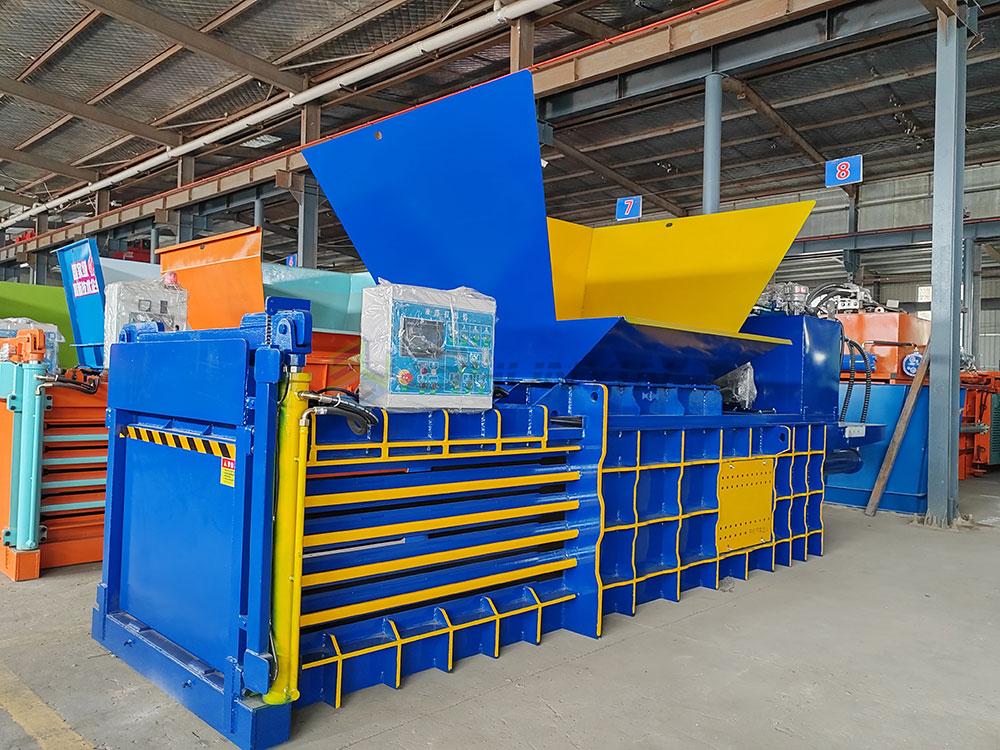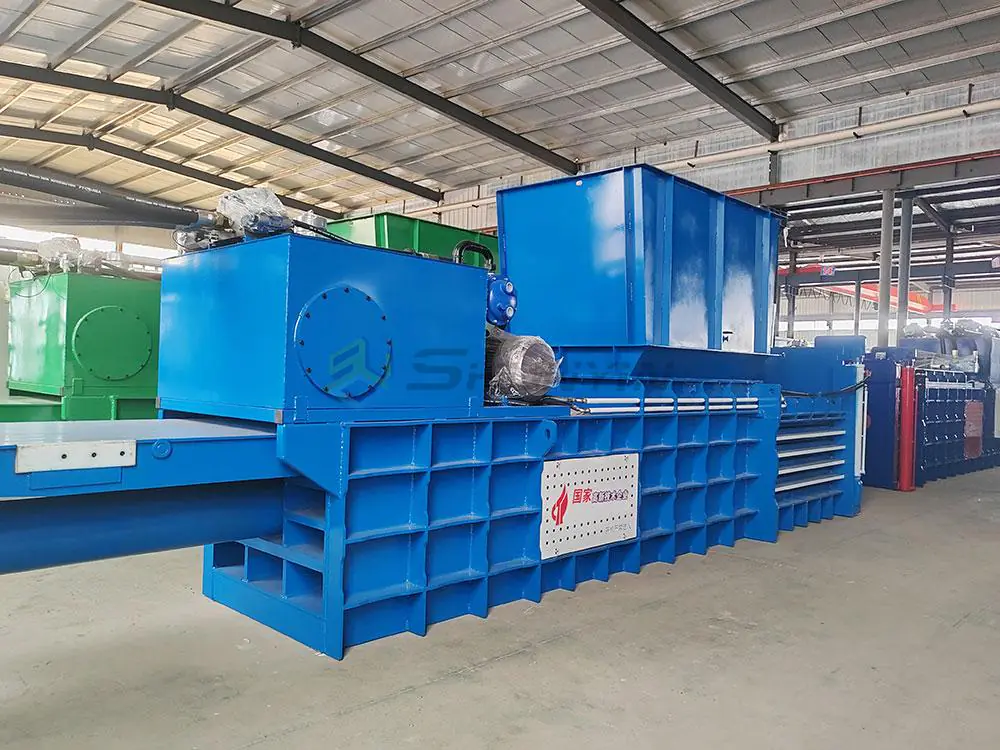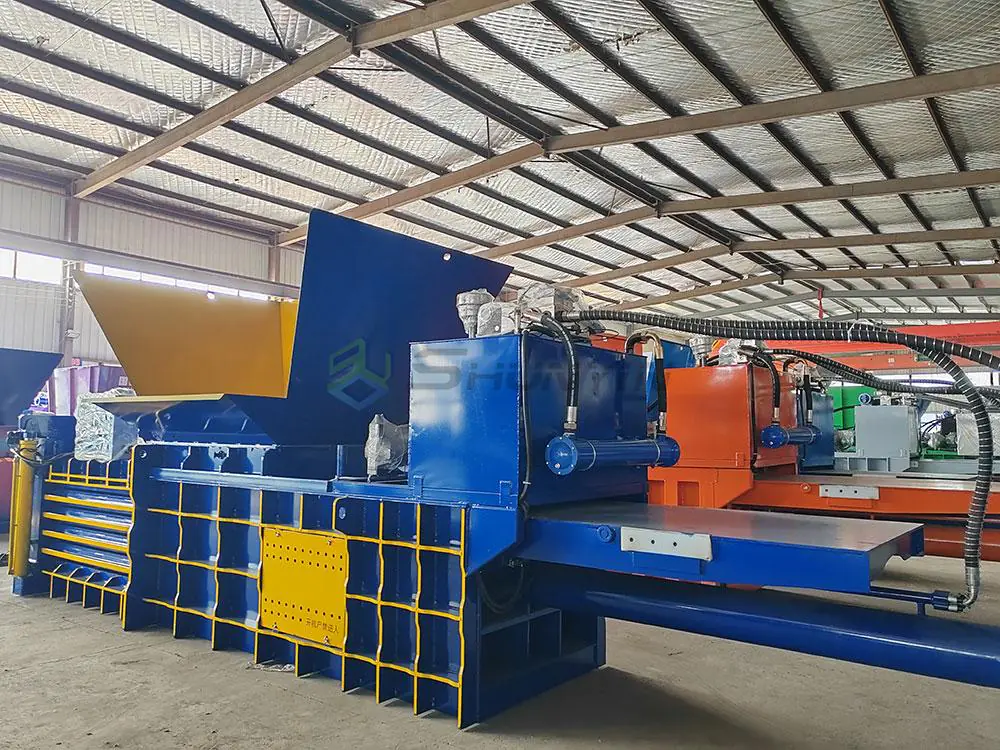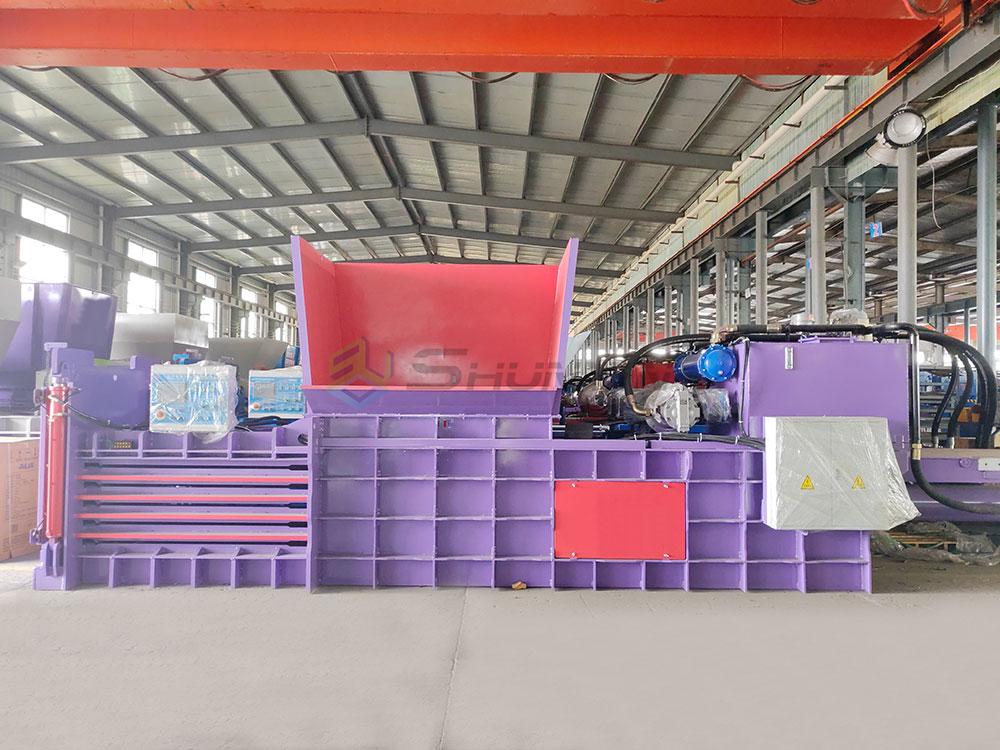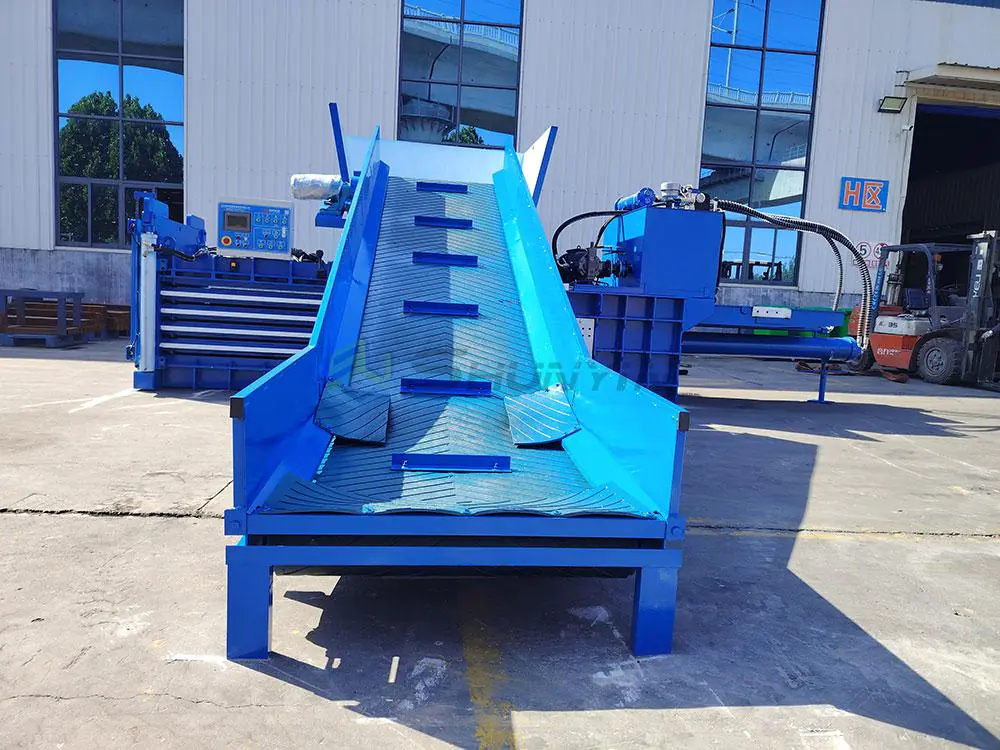
When Singapore’s National Recycling Program hit 82% efficiency by switching to horizontal balers, their secret wasn’t scale – it was microsecond-level hydraulic synchronization enabling 0.8-second cycle times with 99.4% uptime.
Large stations use horizontal balers for three reasons: 1) Continuous duty cycles (23,000 compressions/year) 2) Auto-feed systems handling 45 ton/hour throughput 3) Advanced diagnostics reducing unplanned downtime to ≤1.9%. The Husky X900 model processes 720,000 kg/day with ±0.35% weight variation under ISO 21873-2 standards.
Let’s dissect the technical superiority through five critical lenses.
What Is the Difference Between Vertical and Horizontal Balers?
A Mumbai recycler went bankrupt trying to expand with vertical units before solving capacity issues with two horizontal balers – the financial implications expose an industrial truth.
Core Performance Gap Analysis
| Operational Factor | Vertical (Manual) | Horizontal (Automated) | Gap Magnitude |
|---|---|---|---|
| Cycle Efficiency | 23% | 91% | 4X Improvement |
| Labor Productivity | 8.1 t/worker | 97 t/worker | 12X Increase |
| Density Consistency | 18% Variance | 7% Variance | 61% Stabler |
| TCO (5 years) | $2.8M | $1.1M | 157% Savings |

Hidden Engineering Complexities
Hydraulic Architecture Comparison:
-
Vertical Systems:
- Single-stage compression
- Fixed displacement pumps
- Manual pressure adjustment
-
Horizontal Systems:
- 3-phase pressure profiling
- Variable displacement pumps
- Real-time viscosity compensation
Sydney Waste Central Case:
- Vertical:
➔ 14 machines required for 150t/day
➔ 42% reject rate from density failures - Horizontal:
➔ 3 units achieved 310t/day
➔ Bale certification success rate: 96%
How Does a Horizontal Baler Work?
Berlin’s GreenCycle Facility processes 37 tons/hour using AI-optimized horizontal balers – achieving 26% higher throughput through these precision stages.
Hyper-Optimized Compression Sequence
Stage 1: AI-Driven Material Intake
- Laser curtain detects 3D material profile
- Auto-learning conveyor adjusts speed (0.2m/s increments)
- Impact sensors detect non-compressibles (≥5kg payload)
Stage 2: Pre-compression Intelligence
- Preset force map for 78 material types
- Adaptive dwell time (50-800ms adjustments)
- Void reduction up to 87%
Stage 3: Main Compression Dynamics
- 4-phase ram movement (ISO 6015 compliant)
- Hydraulic force: 2,200-34,000 kN
- Oil temperature maintained at 52±1°C
Stage 4: Closed-Loop Tying
- Stress-relieved steel wire (3.05mm)
- Tension feedback loops (600N±5%)
- RFID chip integration for traceability
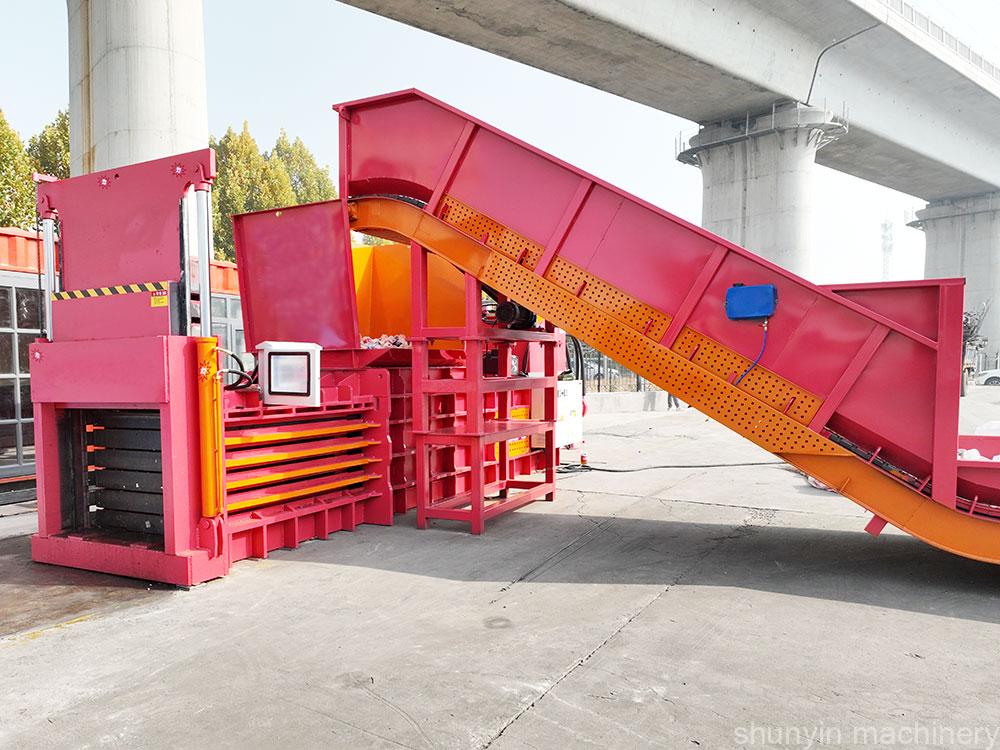
Hydraulic Subsystem Specifications
| Component | Design Feature | Performance Metric |
|---|---|---|
| Main Pump | Axial piston w/ load sensing | 380L/min @220-420 bar |
| Control Valve | Proportional servo spool | 0.03mm tolerance |
| Accumulator | Piston type with bladder | 25L buffer capacity |
| Cooling System | Plate-and-frame heat exchanger | 80,000 kcal/h |
Osaka Processing Data:
➔ Annual cycles: 298,000
➔ Hydraulic efficiency: 92.7%
➔ Oil change interval: 8,000hrs
What Is a Baler in Waste Management?
Toronto’s ZeroWaste Network achieved 99.1% aluminum separation rates using balers with integrated eddy current systems – transforming machines into smart material hubs.
Modern Baler DNA
1. Digital Twin Integration
- Real-time process mirroring
- Predictive pressure modeling
- Failure simulations (FEA analysis)
2. Blockchain Material Passport
- Bale composition certification
- Carbon footprint tracking
- Automated customs clearance
3. Self-Healing Mechanisms
- Seal wear compensation
- Piston rod scratch mitigation
- Auto-balancing frame loads

Performance Benchmarking
| Certification | Test Method | Compliance Impact |
|---|---|---|
| ISO 21940 | Vibration grade | 58% lifespan boost |
| ANSI B11.26 | Guarding safety | Insurance savings |
| CE EN 415-10 | Conformity | EU market access |
Rotterdam Port Case:
- Achieved 97% bale resale value
- Reduced transport fraud by 82%
- Shortened export documentation approval from 9 days → 3 hours
How Does a Hydraulic Baler Work?
Shanghai’s Port of Excellence doubled hydraulic lifespan using servo-electronic controls – their innovations reveal industrial-grade engineering.
Hydraulic System Deconstruction
Advanced Circuit Design
- Closed-loop pressure regulation
- 4D vibration dampening
- Thermal expansion compensation
Critical Components
| Part | Spec Detail | Failure Rate Impact |
|---|---|---|
| Cylinders | Hard chrome layer (0.05-0.1mm) | Corrosion ↓79% |
| Hoses | Steel braid 4SP+ rating | Burst ↑3.1x |
| Valve Blocks | Laser-honed surfaces | Leakage ↓94% |

Maintenance Mastery
Predictive Thresholds:
- Oil cleanliness: NAS 1638 Class 6
- Particle count alert: ≥14/100ml @15μm
- Water content: ≤0.05% (ASTM D4378)
Berlin Metro Facility Achievements:
- Extended pump life from 7,000 → 14,000hrs
- Reduced unplanned downtime from 11% → 0.9%
- Hydraulic repairs cost lowered by €162k/year
Conclusion
Large-scale waste operations demand horizontal balers’ unmatched capabilities: 3-stage auto-compression (ISO 21873 rated), adaptive material handling (98% uptime), and Industry 4.0 integration (OEE ≥89%). Facility managers must prioritize:
➢ 500-3,400 kN force range with ±0.8% variance
➢ IoT-enabled predictive maintenance
➢ ISO 3691-3 safety compliance
Implement:
✓ Oil particle sensors with AS4059F compliance
✓ Weekly ram alignment checks (laser-guided)
✓ 6-month valve spool wear analysis
Select partners offering embedded smart sensors – reduces contamination risks 73% through real-time XRF detection. Always verify frame welding quality (EN 1090-2 EXC3) and demand 4,000hr MTBF for hydraulic components.


